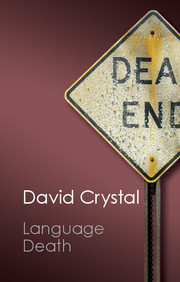Book contents
1 - What is language death?
Published online by Cambridge University Press: 05 November 2014
Summary
The phrase ‘language death’ sounds as stark and final as any other in which that word makes its unwelcome appearance. And it has similar implications and resonances. To say that a language is dead is like saying that a person is dead. It could be no other way – for languages have no existence without people.
A language dies when nobody speaks it any more. For native speakers of the language in which this book is written, or any other thriving language, it is difficult to envision such a possibility. But the reality is easy to illustrate. Take this instance, reported by Bruce Connell in the pages of the newsletter of the UK Foundation for Endangered Languages (FEL), under the heading ‘Obituaries’:
During fieldwork in the Mambila region of Cameroon’s Adamawa province in 1994–95, I came across a number of moribund languages … For one of these languages, Kasabe (called Luo by speakers of neighbouring languages and in my earlier reports), only one remaining speaker, Bogon, was found. (He himself knew of no others.) In November 1996 I returned to the Mambila region, with part of my agenda being to collect further data on Kasabe. Bogon, however, died on 5th Nov. 1995, taking Kasabe with him. He is survived by a sister, who reportedly could understand Kasabe but not speak it, and several children and grandchildren, none of whom know the language.
- Type
- Chapter
- Information
- Language Death , pp. 1 - 34Publisher: Cambridge University PressPrint publication year: 2014

